Faversham Life guest writer, William Palin, is Director of Conservation at the Old Royal Naval College, Greenwich and Chair of the Sheerness Dockyard Preservation Trust.
It was on a blustery spring day in 2006 that I first encountered the majestic, ghostly hulk of Dockyard Church in Sheerness. I had visited the Isle of Sheppey a number of times to see another great ruin, the Tudor gatehouse of Shurland Hall, which the Spitalfields Historic Buildings Trust had taken on with ambitious plans for its repair and reuse. Shurland was deeply romantic, a mini-Hampton Court, in an idyllic setting,but it was the contrasting beauty of the former Royal Dockyard at Sheerness, where stately late-Georgian terraces stood serenely within the industrial landscape of the commercial port that really captured my heart. And there, at the entrance to the port was Dockyards Church, a neo-Classical leviathan, whose stately but pock-marked tower, still commanded centre stage amidst the surrounding cranes and chimneys.
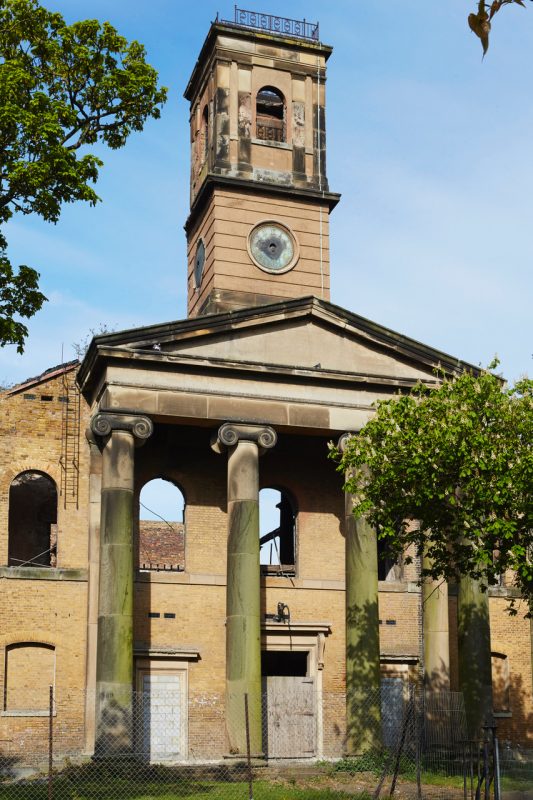
Dockyard Church, Sheerness, designed by George Ledwell Taylor and completed in 1829

Shurland Hall at Eastchurch, Isle of Sheppey, lovingly restored by the Spitalfields Historic Buildings Trust and now a private house
The rebuilding of the Royal Dockyard at Sheerness between 1811 and 1829 produced one of the wonders of the early industrial age. Its engineer was the great John Rennie, whose plan (which included state of the art dry docks) involved the sinking of millions of timber foundation-piles into the marshy land. The yard was constructed in a single campaign between 1811 and 1830 under the supervision of successive naval architects Edmund Holl and George Ledwell Taylor. Despite extensive demolitions during the late 20th-century, many of its buildings survive, all built to the highest standards and characterised by strong, simple Greek-revival detailing.
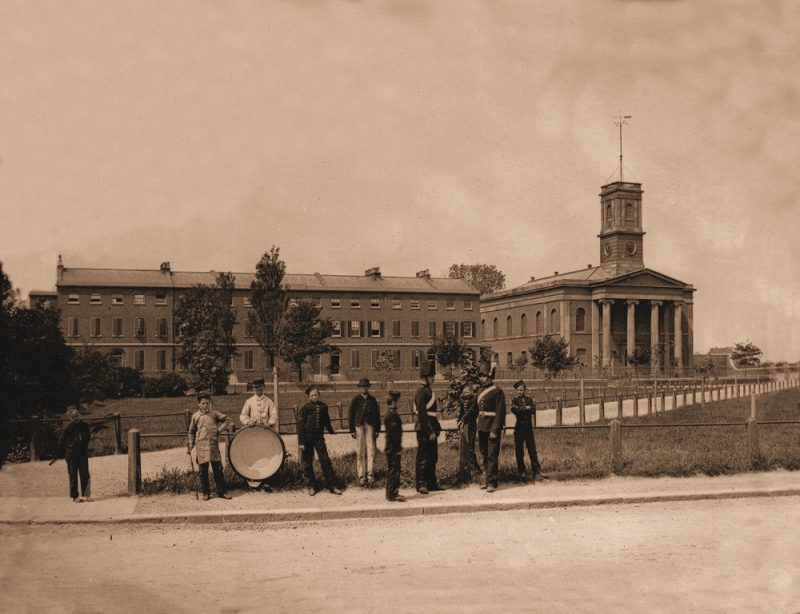
Naval Terrace and Dockyard Church captured in this rare photograph from the 1870s
At the time I first visited, the future of much of the late-Georgian dockyard was in doubt, following decades of demolition and neglect after closure of the naval base in 1960. Naval Terrace, adjacent to the church, was experiencing a revival at the hands of sympathetic owners, but the more substantial residential quarter inside the port (mostly Grade II*-listed) was largely empty and decaying, its fine terrace of officer’s houses and the great mansion that once housed the Superintendent of the yard, languishing in the ownership of an opportunistic developer with grandiose (but seemingly unrealistic) rebuilding plans. The church itself, burnt out in 2001, seemed to symbolise the poignant decline of this once great complex, and yet, with its magnificent Ionic portico and vast square tower, it also carried an air of defiance and, as I saw it then, the key to the revival of the historic dockyard.
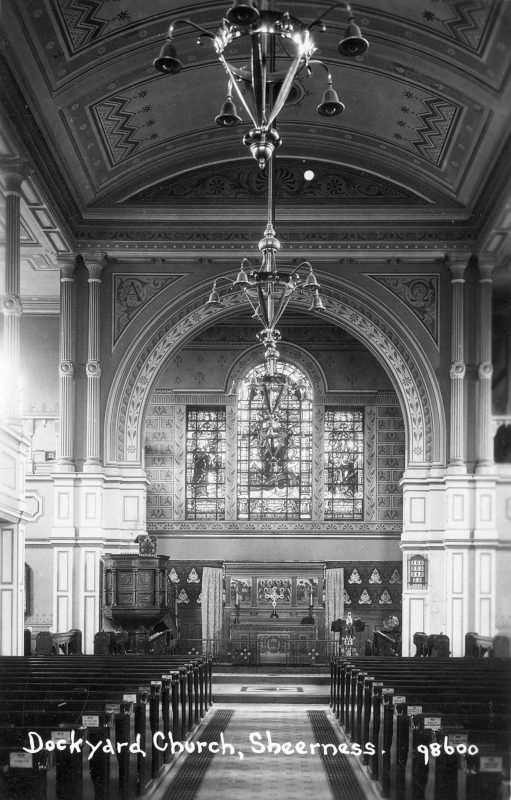
Dockyard Church Interior c.1890
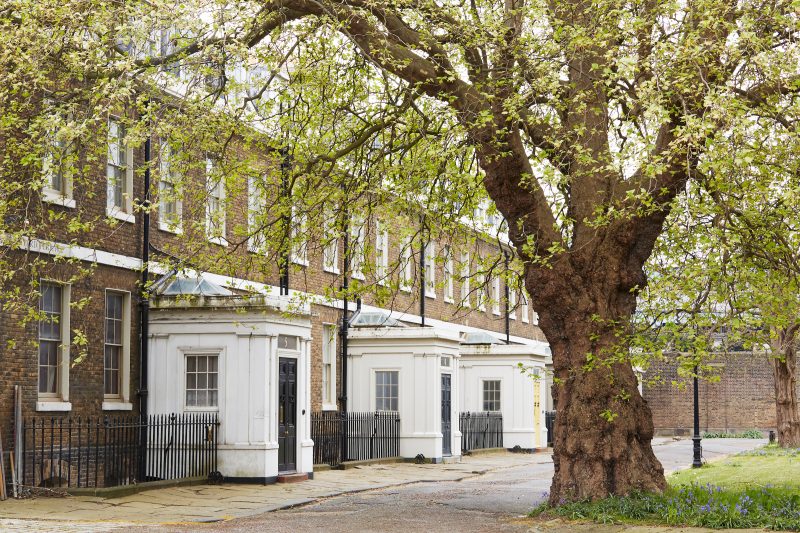
Restored houses in Dockyard Terrace in 2017.
Within a few years and thanks in no-small part to the tenacity of the Spitalfields Trust and the courage of Swale Borough Council, the residential quarter was sold on to sympathetic owner-restorers. The church was then acquired by the council using a compulsory purchase order and passed on to a new charity – the Sheerness Dockyard Preservation Trust. The trust was formed by a small group of savvy historians, surveyors and business people who shared a passion for the haunting beauty of Sheerness and who were united by a determination to achieve the impossible and bring the battered hulk of Dockyard Church back to life. With seed-corn funding from the Heritage Lottery Fund (HLF), the Architectural Heritage Fund, Historic England and others, the trust appointed a project co-ordinator, Simon Hawkins, and began to think about how the building might be rescued and reused – with a view to putting in a major HLF grant application.
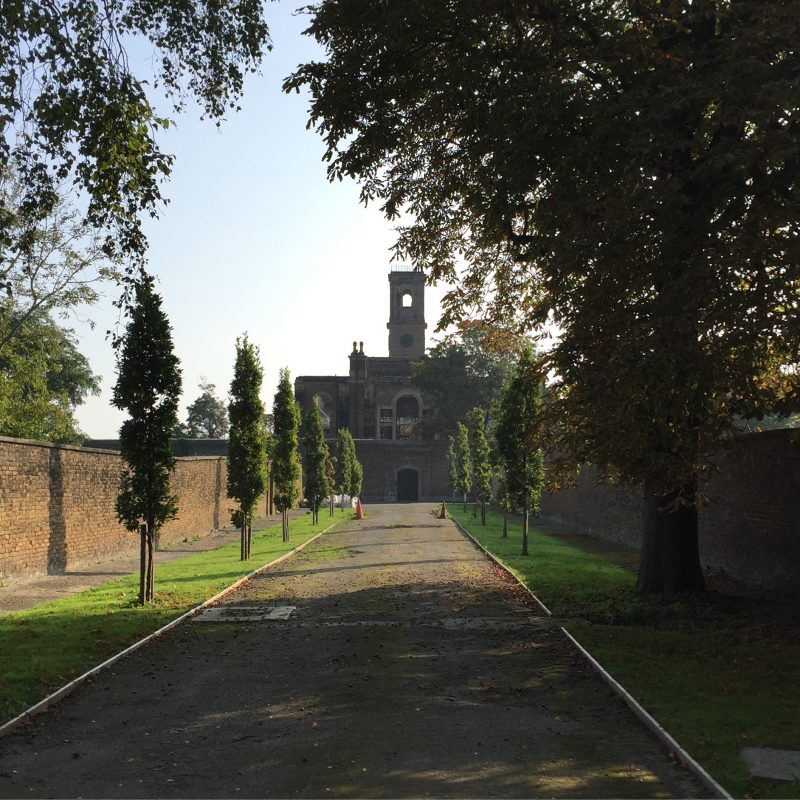
Dockyard Church from the West
Gradually a proposal emerged for a mixed-use building, including an events space, and a social enterprise centre for the benefit of local young people. And, perhaps most exciting of all was the plan to include at the heart of the revived building a new permanent display space for the great Dockyard Model. The Model, made in the early 19th-century is the largest and most ambitious of its kind. It was rescued heroically from the port by dockyard historian Jonathan Coad in the 1970s and its many components now sit on shelves in an English Heritage store near Gosport. When fully assembled this beautiful object is over 40ft square – it’s return to Sheerness is long overdue and will provide the town with a nationally important visitor attraction.
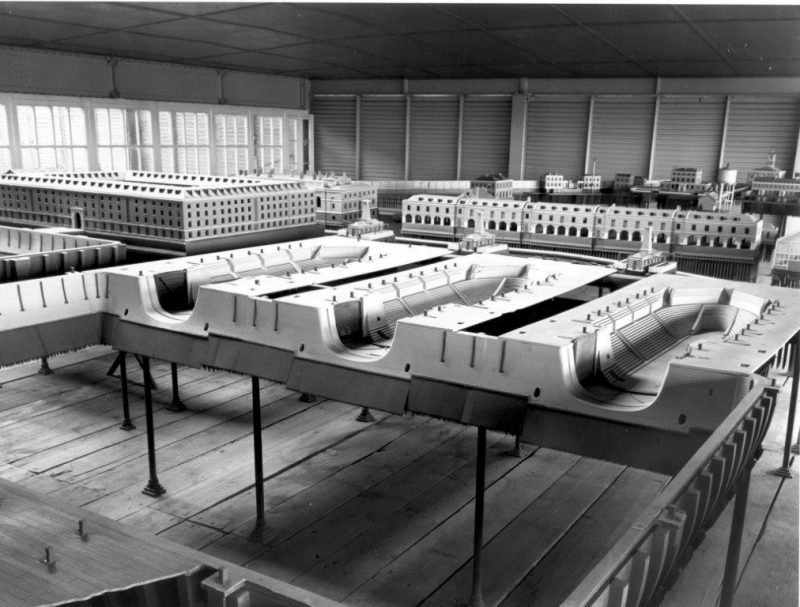
The remarkable Dockyard Model prior to its removal from the port of Sheerness in the 1970s
After a year in development, the Trust submitted its application to the HLF in December 2016. In May this year we learned that the bid had been successful with £4,75m allocated to the Dockyard Church project. The total project costs will be over £8m so there is still much work and some serious fundraising to be done, but the momentum now seems unstoppable. In July this year, the scaffolding will go up and the first repairs undertaken to the battered fabric of the building. By summer next year we hope the project will commence in earnest with the new Dockyard Church opening in 2021.
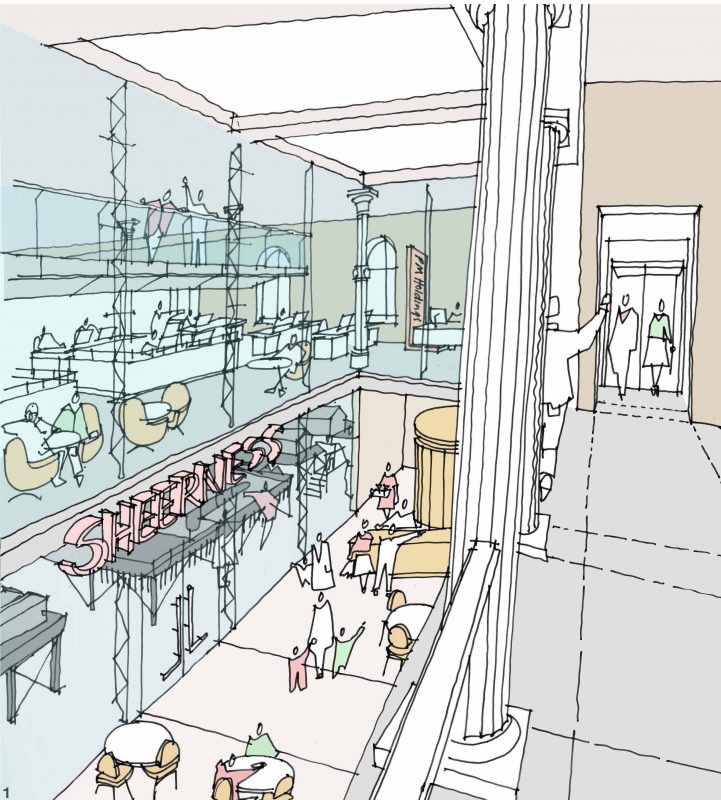
One of the proposals for the rebuilt interior of Dockyard Church by Chris Balme of Ferguson Mann Architects
To make a donation and for updates on progress please visit the SDPT website: www.sheernessdockyardpt.org.uk
Photographs by Matthew Andrews and Will Palin